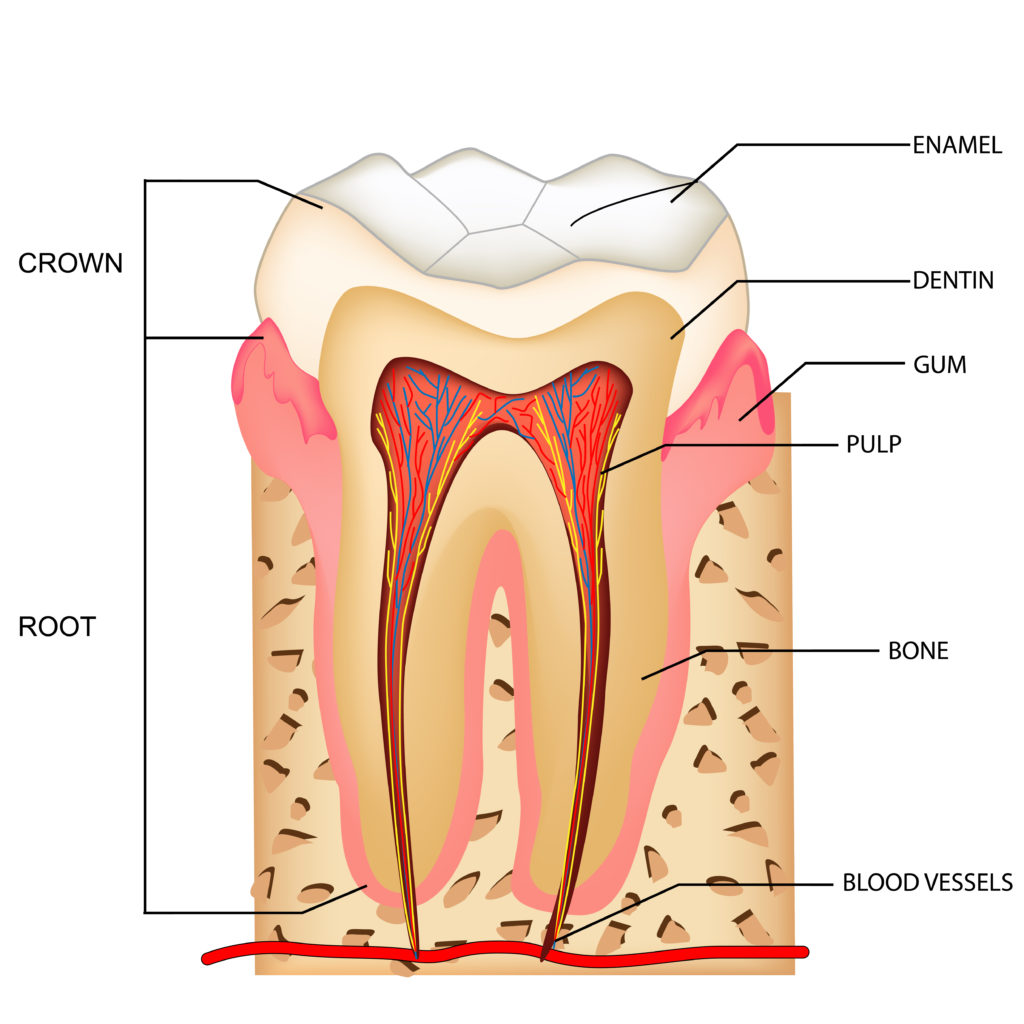Root Canal Therapy
WHAT IS ROOT CANAL THERAPY?
If your tooth structure is compromised due to a crack, infection will invade the root canal of the tooth. This will cause the pulp in the root to become infected. When this happens the effected pulp will need to be removed and then filled to prevent the infection from spreading into other parts of the body.
THIS PROCESS IS CALLED Root Canal Therapy or Root Canal Treatment
Any of the following things can result in acute inflammation of the pulp
- Deep tooth decay
- Repeated dental procedures on the one tooth, such as a large filling
- Traumatic Damage- like a crack, chip or even a root fracture.
- Gum disease can also start root canal problems requiring root canal treatment.
Pain is experienced when inflammation causes swelling and pressure inside the tooth has nowhere to go. If this is left untreated it will lead to irreversible damage to the pulp of that tooth. Once the pulp dies, initially the pain may subside, but more often than not, it will return as an acute painful infection.
If this is left untreated, the infection usually spreads into surrounding tissues and bone and can develop into a prolonged chronic infection, where symptoms can range from mild to severe.
WHAT TO EXPECT FROM A ROOT CANAL PROCEDURE
PRELIMINARY APPOINTMENT
At this appointment it is necessary for the dentist to remove the decay and the source of infection of the pulp.
If a fracture of your tooth has reached the pulp, or an infection is associated with gum disease, it can be more difficult, if not impossible to save the tooth.
The dentist will determine whether the lost tooth structure can be restored or not and will discuss your options & provide you with a treatment plan.
ROOT CANAL PREP - 1ST APPOINTMENT
- After localising the tooth with a general anesthetic, a thin rubber vinyl sheet with a hole in it will be paced over the affected and adjacent teeth. This allows the root canal treatment to be done in a sterile environment. The affected tooth is accessible through the hole and the sheet acts like a barrier to the rest of the mouth. This is required to prevent contamination of bacteria in saliva or from the rest of your mouth.
- To allow access to the pulp chamber, a small access hole is drilled through the biting surface of a back tooth or from behind , when it's a front tooth.
- Specially designed instruments are used to clean out the root canals and the pulp chamber, removing all of the diseased or dead pulp tissue. Once the pulp, and the dead nerves are removed, you will no longer feel pain in that tooth.
Because this area is numb and the tissue being removed is either dead or dying this is not a painful process.
- The Canals are disinfected with antiseptic and antibacterial solutions. They are then shaped with tiny flexible instruments to allow them to be filled with root canal filling. They are washed and cleaned again to remove any debris before sealing them.
- Sealing of the canals is a critically Important step- This prevents them from becoming reinfected with bacteria. This is usually a rubber type of material that will fit exactly into the freshly prepared canals.
- A temporary or permanent filling material will then be placed to seal the access hole made to treat the canals. If the tooth is not stong enough to hold a filling in place, a post will be required . This will be either a metal or very strong plastic post. It will be placed in one of the canals inside the tooth to help support it.
WHAT TO EXPECT AFTERWARDS
After the procedure, antibiotics may be prescribed to treat or prevent infection. Be sure to follow the instructions of your dentist carefully. After- effects of treatment are minimal, lasting a couple of days and sometimes up to a week. It is normal to have some minor discomfort after treatment including slight soreness which can be managed with over the counter medication.
If pain is experienced it should decrease, however, if the pain increases please call
Vermont South Dental or Dr Mark Oblak after hours on 0412 044 561
FOLLOW UP APPOINTMENT - 2ND APPOINTMENT
Your tooth will need a permanent restoration
You will require either a filling or a crown, to replace your lost tooth structure. This will provide a complete seal to the top of the tooth. This will be discussed as part of your treatment plan and arranged at the time of your initial consultation. This part of the procedure is very important and should not be overlooked, just because you are no longer in pain. Many studies show that if the filled root canals are re-contaminated with bacteria from the mouth, there could be a recurrence of infection around the tooth.
KNOWLEDGE IS POWER
It is commonly found that people who are nervous, tend to lack information about their treatment.
Actually knowing about their treatment, allows patients to have an understand of whats to come and helps to alleviate their fears. The small space of a tooth root canal requires a great deal of precision and care to treat properly. Because of this, the dentist will use state-of-the-art technology and operating microscopes throughout the procedure. This will ensure that the canals are properly cleaned, filled and sealed.
Your dentist will be happy to discuss the process and any questions you may have about your treatment.



